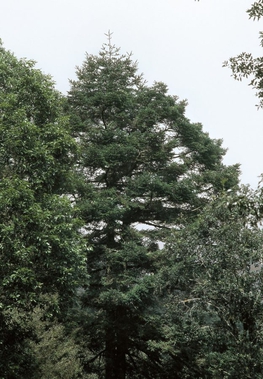Abies hidalgensis facts for kids
Quick facts for kids Abies hidalgensis |
|
|---|---|
 |
|
| Conservation status | |
| Scientific classification |
The Abies hidalgensis, also known as the Hidalgo Fir, is a special type of conifer tree. It belongs to the Pinaceae family, which includes pines and firs. This tree is found only in Mexico, specifically in the state of Hidalgo. This makes it an "endemic" species, meaning it lives naturally in just one small area.
Contents
Discovering the Hidalgo Fir
This unique tree was first described by scientists in 1995. This means that before 1995, the Abies hidalgensis was not officially known to the scientific world. Its discovery helped us learn more about the amazing variety of trees in Mexico.
Where the Hidalgo Fir Lives
The Hidalgo Fir grows in a special kind of place called a cloud forest. These forests are often covered in mist or clouds, which keeps the air very humid. This humid environment is perfect for many types of plants and trees.
Other trees and shrubs that share this habitat include Buddleja cordata, Cupressus lusitanica, and Pinus patula. These plants all thrive together in the cool, moist conditions of the cloud forest.
What the Hidalgo Fir Looks Like
The Hidalgo Fir is a beautiful tree with distinct features.
Trunk and Branches
Most Hidalgo Fir trees have a single main trunk. Their branches usually start by growing upwards, then gently curve downwards. This gives the tree a graceful appearance.
Crown and Foliage
The top part of the tree, called the crown, can be shaped like a tall column or a cone. The leaves, or foliage, are a lovely gray-green color. They stay green all year round, like most conifers.
Bark and Cones
When the tree is young, its bark is smooth and light gray. As the tree gets older, the bark starts to split into plates. When these plates peel away, they show a striking "blood-red" inner bark. This makes older trees look very unique.
The cones of the Hidalgo Fir are quite noticeable. They can grow up to 8 centimeters (about 3 inches) long and 4 centimeters (about 1.5 inches) wide. These cones hold the seeds that will grow into new fir trees.
See also
 In Spanish: Abies hidalgensis para niños
In Spanish: Abies hidalgensis para niños


